#facial recognition system
Text
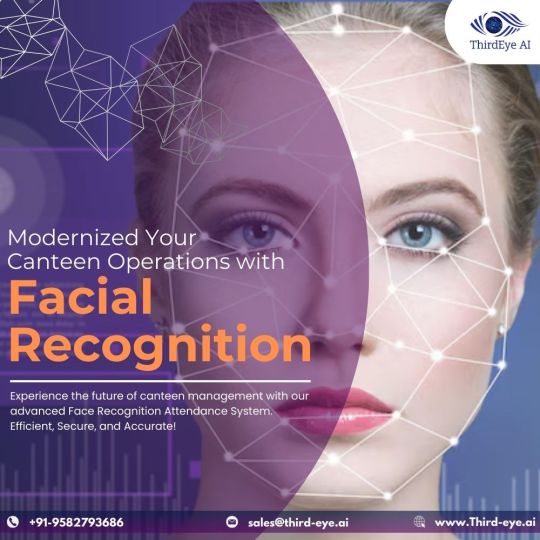
#facial recognition solution#facial recognition technology#AI -powered facial recognition#facial recognition attendance system#fr based attendance#Facial recognition#FR attendance system#facial recognition software#facial recognition system#facial recognition technology in india
0 notes
Text
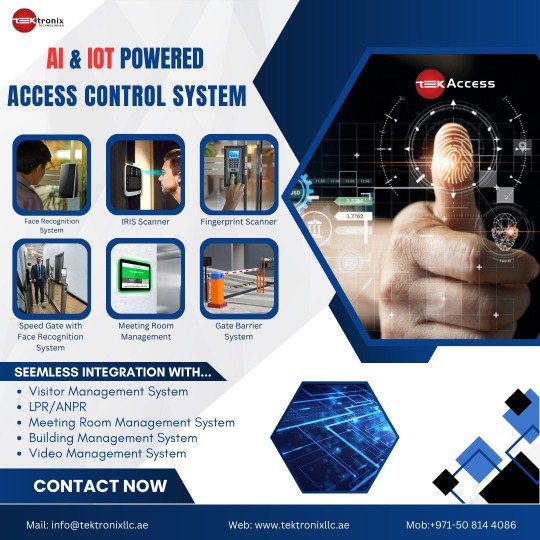
#Facialrecognitiondubai #Facialrecognitionabudhabi
#facialrecognitionattendancesystemuae #facialrecognitionattendanceuae #facerecognitionattendancesystemsharjah
#facerecognitionattendancesystemajman #facerecognitionattendancesystem #facialrecognization
#facerecognitionattendancesystemsharjah #facerecognizationsoftwareuae
#access control system#access control system supplier abu dhabi#access control system in sharjah#facial recognization uae#facial recognization abu dhabi#facial recognization in sharjah#facial recognization ajman#facial recognization in bur dubai#facial recognization system in UAE#facial recognization Solutions in Abu Dhabi#facial recognition abu dhabi#facial recognition system#facial recognition saudi arabia#facial recognition in saudi arabia#facial recognition riyadh saudi#facial recognition solutions abu dhabi#Ai Based facial recognition Software Abu Dhabi#ai based facial recognition Systems in bur dubai#facial recognition software bur dubai#facial recognition software abu dhabi#facial recognition software in ajman#facial recognition software sharjah#facial recognition attendance system#facial recognition attendance system abu dhabi#facial recognition attendance system in ajman#facial recognition attendance system bur dubai#facial recognition attendance system sharjah#facial recognition attendance system alain#facial recognition attendance system riyadh saudi arabia#facial recognition attendance saudi arabia
1 note
·
View note
Text
Facial recognition systems need a database or a pre-recorded data set to compare captured images and identify faces. A complete high-end configuration unit is installed in the institute and the data capturing process is initiated. The camera mounted with the machine captures and processes the images of students with various angles and qualities along with the basic identification details for further processing.The Image is processed in this way to take care of image quality & other factors.
0 notes
Text
Application Solution of Forklift Driver Face Recognition and Permission Collector Based on FET3568J-C SoM
Forklift is an indispensable equipment in modern industrial production and logistics transportation, but at the same time, it is also a mechanical equipment with certain risks. If operated improperly or managed poorly, it can easily lead to safety accidents, causing injuries and property losses. Therefore, improving the safety awareness and management level of forklift drivers is of great significance in ensuring the safety and smooth operation of enterprise production and logistics transportation.
In the safety protection and protective devices, it is stated that forklifts must be equipped with a driver authorization information collector. This collector is used to bind the driver's personal identity information with biometric information such as fingerprints, iris, facial features, or magnetic cards. The forklift can only be started after the driver's permission is verified.
The forklift facial recognition driver authorization collector is primarily used for driver permission management. With high-precision cameras and facial recognition algorithms, this system can accurately identify and determine the driver’s identity information. It helps ensure that only authorized individuals can operate the forklift, improving safety and security in the workplace.
Only drivers who have undergone professional training and obtained authorization will have their information entered into the system and be granted permission to operate the forklift. Once the system detects an unauthorized person attempting to operate the forklift, it immediately triggers an alarm and takes measures to prevent the forklift from starting, ensuring the safety of operations.
The forklift facial recognition driver authorization collector has the following notable features:
Facial recognition: By using cameras to capture facial information, it can accurately identify the facial features of drivers in a short period of time with high precision, without the need for manual intervention, greatly improving management efficiency.
Security: The system is designed with high security in mind. It effectively prevents others from impersonating drivers and provides dual protection for forklift operations.
Integration: The system can not only operate independently but also seamlessly integrate with other security devices, access control systems, etc., forming a comprehensive security management system to further enhance safety.
Scalability: The system supports the integration of finger print recognition and card recognition systems, allowing for the expansion of corresponding functions based on specific needs.
The overall solution for the forklift driver authorization collector based on FET3568J-C system on module is as follows:

FET3568J-C industrial-grade SoM is provided by Forlinx Embedded, which serves as the core of the forklift driver authorization collector. It features a four-core 64-bit Cortex-A55 architecture with a high frequency of up to 1.8GHz, providing powerful performance support. Additionally, it is equipped with a built-in NPU with 1TOPS computational power, meeting the requirements for lightweight edge AI computing.
The SoM has advantages such as high performance, low power consumption, and low cost.
Forlinx RK3568J industrial-grade SoM provides abundant interface resources, making it easy to connect with external modules.
Supports DVP, MIPI-CSI, USB, and network camera interfaces.
Supports RGB, LVDS, HDMI4, MIPI, and eDP display interfaces, making it convenient to connect external displays for facial recognition and comparison display.
Supports 2*1000M Ethernet ports, WiFi, 4G, and 5G interfaces, enabling remote monitoring, control, and data transmission functionalities.
Supports 3*CAN bus interfaces, allowing the collector to communicate with the forklift system through CAN bus interfaces to obtain vehicle status and driver information.
Supports GPIO interfaces, allowing connection and control of other devices on the forklift through GPIO interfaces, such as controlling the start and stop functions of the forklift.
Supports 10 UART interfaces, which can be used for connecting and communicating with RS232/RS485 external sensors through level conversion. The rich high-speed interfaces make function expansion and connection more efficient and simple.
Originally published at www.forlinx.net.
#Forklift safety#Driver authorization collector#Facial recognition system#rk3568j system on module#Industrial grade SoM
0 notes
Text
Twitter Blue Tests Verification With Government ID and Selfie
X (the social media site formerly known as Twitter) is in the process of launching a new identity verification feature that could prove controversial. The feature, which is currently only offered to/forced on premium “Blue” subscribers, asks users to fork over a selfie and a picture of a government issued ID to verify that they are who they say they are.
Mr. Tweet Fumbles Super Bowl Tweet
The…

View On WordPress
#Biometrics#Computer access control#Elon Musk#Facial recognition system#Gizmodo#Google#ID.me#Identity document#Identity management#Identity verification service#Internet#Internet privacy#Microsoft#Musk#Nima Owji#PAYPAL#Surveillance#Technology#twitter#Uber#Verification
0 notes
Text
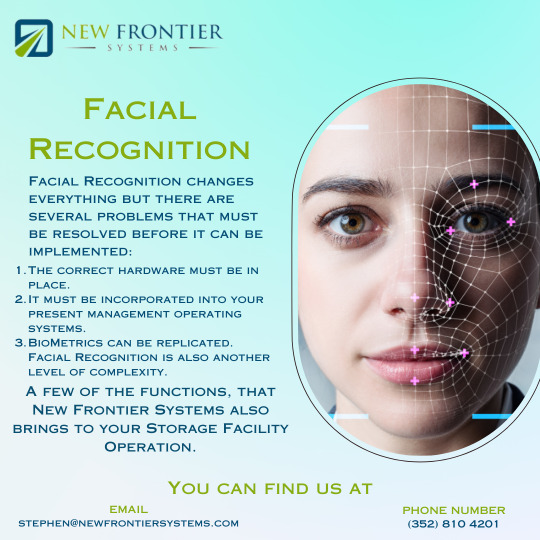
At New Frontier Systems, we are at the forefront of cutting-edge technology, ushering in a new era of security and convenience through our advanced Facial Recognition System. With a commitment to innovation and excellence, our state-of-the-art system is designed to provide unparalleled accuracy, efficiency, and peace of mind.
0 notes
Text
A safe entry to workplace with Facial Recognition Attendance System
Facial Recognition Attendance System is the new-generation attendance tracking mechanism ideal to create a secure, COVID-Free work place.
#Facial Recognition Attendance System#Facial Recognition Attendance#Facial Recognition System#Facial Recognition#face recognition#greythr
0 notes
Link
#access control system uae#access control systems in abu dhabi#access control systems in ajman#access control systems in alain#access control systems in sharjah#access control systems in bur dubai#Facial recognition system#facial recognition device#facial recognition device uae#access control systems in uae#access control system in bur dubai#access control system in ajman#Biometric access control uae#access control system in uae#access control system abu dhabi#access control sharjah#access control system in alain
0 notes
Text
DigiYatra App Launch: Facial recognition installed at these three airports today
DigiYatra App Launch: Facial recognition installed at these three airports today
On Thursday, Civil Aviation Minister Jyotiraditya Scindia launched DigiYatra, that allows entry of air passengers based on a facial recognition system at the airport in the nation’s capital.
“DigiYatra, a biometric enabled seamless travel experience based on facial recognition technology aims to provide a new digital experience for air travellers in #India,” the Ministry of Civil Aviation,…
View On WordPress
#air passenger#Bengaluru airport#Civil Aviation Minister Jyotiraditya Scindia#Delhi Airport#Digi Yatra app#Digi Yatra launch#DigiYatra#DigiYatra mobile app#facial recognition system#Jyotiraditya Scindia#Paperless Entry in airport#Varanasi airport
0 notes
Text






























⋆。˚ ☁︎ ˚。⋆。˚☽˚。⋆ ⋆。˚ ☁︎ ˚。⋆。˚☽˚。⋆ ⋆。˚ ☁︎ ˚。⋆。˚
O Jesus, through the Immaculate Heart of Mary,
I offer you my prayers, works, joys and sufferings of this day
for all the intentions of your Sacred Heart,
in union with the Holy Sacrifice of the Mass throughout the world,
for the salvation of souls, the reparation for sins, the reunion of all Christians,
and in particular for the intentions of the Holy Father this month.
Amen
⋆⁺₊⋆ ☀︎ ⋆⁺₊⋆ ⋆⁺₊⋆ ☀︎ ⋆⁺₊⋆ ⋆⁺₊⋆ ☀︎ ⋆⁺₊⋆ ⋆⁺₊⋆
#divine machinery#mechanical divinity#the holy mecha#transhumanism#cyberpunk#down with the system#late stage of capitalism#anti capitalism#the wicked will not inherit the kingdom of god#cybercore#facial recognition is evil
118 notes
·
View notes
Text
Explore how advanced face recognition technology is transforming operations at a premier automotive component manufacturer. Discover its role in enhancing security protocols, streamlining access controls, and optimizing workflow efficiency. Unlock the competitive edge with insights into how this innovation is revolutionizing automotive manufacturing. Dive into the future of efficiency today!
#Face Recognition#facial recognition#thirdeye ai#facial recognition technology#facial recognition system
0 notes
Text





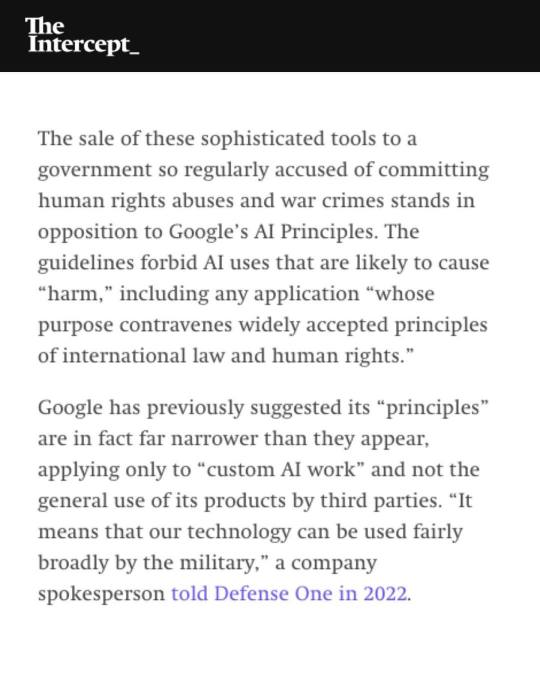

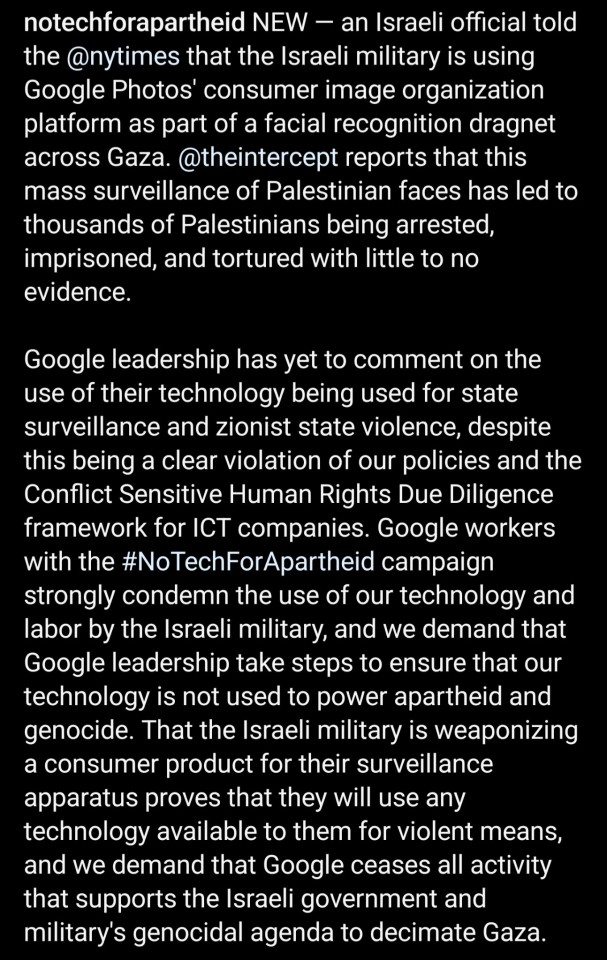


#facial recognition#facial recognition software#boycott israel#boycott google#google software is being used to help target and kill Palestinians#google#apartheid#save palestine#ethnic cleansing#israel is an apartheid state#seek truth#free palestine 🇵🇸#genocide#illegal occupation#israel is committing genocide#israeli war crimes#project nimbus#google photos#israeli hit list#israeli war criminals#israel is a terrorist state#surveillance state#mass surveillance#even AI is racist with facial recognition systems being notoriously unrealiable for people with darker skin tones#no tech for apartheid#human rights violations#conflict sensitive human rights due diligence#seems like that can be bypassed if the money is good enough#dystopian nightmare
77 notes
·
View notes
Text

The first time Karl Ricanek was stopped by police for “driving while Black” was in the summer of 1995. He was twenty-five and had just qualified as an engineer and started work at the US Department of Defense’s Naval Undersea Warfare Center in Newport, Rhode Island, a wealthy town known for its spectacular cliff walks and millionaires’ mansions. That summer, he had bought his first nice car—a two-year-old dark green Infiniti J30T that cost him roughly $30,000 (US).
One evening, on his way back to the place he rented in First Beach, a police car pulled him over. Karl was polite, distant, knowing not to seem combative or aggressive. He knew, too, to keep his hands in visible places and what could happen if he didn’t. It was something he’d been trained to do from a young age.
The cop asked Karl his name, which he told him, even though he didn’t have to. He was well aware that if he wanted to get out of this thing, he had to cooperate. He felt at that moment he had been stripped of any rights, but he knew this was what he—and thousands of others like him—had to live with. This is a nice car, the cop told Karl. How do you afford a fancy car like this?
What do you mean? Karl thought furiously. None of your business how I afford this car. Instead, he said, “Well, I’m an engineer. I work over at the research centre. I bought the car with my wages.”
That wasn’t the last time Karl was pulled over by a cop. In fact, it wasn’t even the last time in Newport. And when friends and colleagues shrugged, telling him that getting stopped and being asked some questions didn’t sound like a big deal, he let it lie. But they had never been stopped simply for “driving while white”; they hadn’t been subjected to the humiliation of being questioned as law-abiding adults, purely based on their visual identity; they didn’t have to justify their presence and their choices to strangers and be afraid for their lives if they resisted.
Karl had never broken the law. He’d worked as hard as anybody else, doing all the things that bright young people were supposed to do in America. So why, he thought, can’t I just be left alone?
Karl grew up with four older siblings in Deanwood, a primarily Black neighbourhood in the northeastern corner of Washington, DC, with a white German father and a Black mother. When he left Washington, DC, at eighteen for college, he had a scholarship to study at North Carolina A&T State University, which graduates the largest numbers of Black engineers in the US. It was where Karl learned to address problems with technical solutions, rather than social ones. He taught himself to emphasize his academic credentials and underplay his background so he would be taken more seriously amongst peers.
After working in Newport, Karl went into academia, at the University of North Carolina, Wilmington. In particular, he was interested in teaching computers to identify faces even better than humans do. His goal seemed simple: first, unpick how humans see faces, and then teach computers how to do it more efficiently.
When he started out back in the ’80s and ’90s, Karl was developing AI technology to help the US Navy’s submarine fleet navigate autonomously. At the time, computer vision was a slow-moving field, in which machines were merely taught to recognize objects rather than people’s identities. The technology was nascent—and pretty terrible. The algorithms he designed were trying to get the machine to say: that’s a bottle, these are glasses, this is a table, these are humans. Each year, they made incremental, single-digit improvements in precision.
Then, a new type of AI known as deep learning emerged—the same discipline that allowed miscreants to generate sexually deviant deepfakes of Helen Mort and Noelle Martin, and the model that underpins ChatGPT. The cutting-edge technology was helped along by an embarrassment of data riches—in this case, millions of photos uploaded to the web that could be used to train new image recognition algorithms.
Deep learning catapulted the small gains Karl was seeing into real progress. All of a sudden, what used to be a 1 percent improvement was now 10 percent each year. It meant software could now be used not just to classify objects but to recognize unique faces.
When Karl first started working on the problem of facial recognition, it wasn’t supposed to be used live on protesters or pedestrians or ordinary people. It was supposed to be a photo analysis tool. From its inception in the ’90s, researchers knew there were biases and inaccuracies in how the algorithms worked. But they hadn’t quite figured out why.
The biometrics community viewed the problems as academic—an interesting computer-vision challenge affecting a prototype still in its infancy. They broadly agreed that the technology wasn’t ready for prime-time use, and they had no plans to profit from it.
As the technology steadily improved, Karl began to develop experimental AI analytics models to spot physical signs of illnesses like cardiovascular disease, Alzheimer’s, or Parkinson’s from a person’s face. For instance, a common symptom of Parkinson’s is frozen or stiff facial expressions, brought on by changes in the face’s muscles. AI technology could be used to analyse these micro muscular changes and detect the onset of disease early. He told me he imagined inventing a mirror that you could look at each morning that would tell you (or notify a trusted person) if you were developing symptoms of degenerative neurological disease. He founded a for-profit company, Lapetus Solutions, which predicted life expectancy through facial analytics, for the insurance market.
His systems were used by law enforcement to identify trafficked children and notorious criminal gangsters such as Whitey Bulger. He even looked into identifying faces of those who had changed genders, by testing his systems on videos of transsexual people undergoing hormonal transitions, an extremely controversial use of the technology. He became fixated on the mysteries locked up in the human face, regardless of any harms or negative consequences.
In the US, it was 9/11 that, quite literally overnight, ramped up the administration’s urgent need for surveillance technologies like face recognition, supercharging investment in and development of these systems. The issue was no longer merely academic, and within a few years, the US government had built vast databases containing the faces and other biometric data of millions of Iraqis, Afghans, and US tourists from around the world. They invested heavily in commercializing biometric research like Karl’s; he received military funding to improve facial recognition algorithms, working on systems to recognize obscured and masked faces, young faces, and faces as they aged. American domestic law enforcement adapted counterterrorism technology, including facial recognition, to police street crime, gang violence, and even civil rights protests.
It became harder for Karl to ignore what AI facial analytics was now being developed for. Yet, during those years, he resisted critique of the social impacts of the powerful technology he was helping create. He rarely sat on ethics or standards boards at his university, because he thought they were bureaucratic and time consuming. He described critics of facial recognition as “social justice warriors” who didn’t have practical experience of building this technology themselves. As far as he was concerned, he was creating tools to help save children and find terrorists, and everything else was just noise.
But it wasn’t that straightforward. Technology companies, both large and small, had access to far more face data and had a commercial imperative to push forward facial recognition. Corporate giants such as Meta and Chinese-owned TikTok, and start-ups like New York–based Clearview AI and Russia’s NTech Labs, own even larger databases of faces than many governments do—and certainly more than researchers like Karl do. And they’re all driven by the same incentive: making money.
These private actors soon uprooted systems from academic institutions like Karl’s and started selling immature facial recognition solutions to law enforcement, intelligence agencies, governments, and private entities around the world. In January 2020, the New York Times published a story about how Clearview AI had taken billions of photos from the web, including sites like LinkedIn and Instagram, to build powerful facial recognition capabilities bought by several police forces around the world.
The technology was being unleashed from Argentina to Alabama with a life of its own, blowing wild like gleeful dandelion seeds taking root at will. In Uganda, Hong Kong, and India, it has been used to stifle political opposition and civil protest. In the US, it was used to track Black Lives Matter protests and Capitol rioters during the uprising in January 2021, and in London to monitor revellers at the annual Afro-Caribbean carnival in Notting Hill.
And it’s not just a law enforcement tool: facial recognition is being used to catch pickpockets and petty thieves. It is deployed at the famous Gordon’s Wine Bar in London, scanning for known troublemakers. It’s even been used to identify dead Russian soldiers in Ukraine. The question whether it was ready for prime-time use has taken on an urgency as it impacts the lives of billions around the world.
Karl knew the technology was not ready for widespread rollout in this way. Indeed, in 2018, Joy Buolamwini, Timnit Gebru, and Deborah Raji—three Black female researchers at Microsoft—had published a study, alongside collaborators, comparing the accuracy of face recognition systems built by IBM, Face++, and Microsoft. They found the error rates for light-skinned men hovered at less than 1 percent, while that figure touched 35 percent for darker-skinned women. Karl knew that New Jersey resident Nijer Parks spent ten days in jail in 2019 and paid several thousand dollars to defend himself against accusations of shoplifting and assault of a police officer in Woodbridge, New Jersey.
The thirty-three-year-old Black man had been misidentified by a facial recognition system used by the Woodbridge police. The case was dismissed a year later for lack of evidence, and Parks later sued the police for violation of his civil rights.
A year after that, Robert Julian-Borchak Williams, a Detroit resident and father of two, was arrested for a shoplifting crime he did not commit, due to another faulty facial recognition match. The arrest took place in his front garden, in front of his family.
Facial recognition technology also led to the incorrect identification of American-born Amara Majeed as a terrorist involved in Sri Lanka’s Easter Day bombings in 2019. Majeed, a college student at the time, said the misidentification caused her and her family humiliation and pain after her relatives in Sri Lanka saw her face, unexpectedly, amongst a line-up of the accused terrorists on the evening news.
As his worlds started to collide, Karl was forced to reckon with the implications of AI-enabled surveillance—and to question his own role in it, acknowledging it could curtail the freedoms of individuals and communities going about their normal lives. “I think I used to believe that I create technology,” he told me, “and other smart people deal with policy issues. Now I have to ponder and think much deeper about what it is that I’m doing.”
And what he had thought of as technical glitches, such as algorithms working much better on Caucasian and male faces while struggling to correctly identify darker skin tones and female faces, he came to see as much more than that.
“It’s a complicated feeling. As an engineer, as a scientist, I want to build technology to do good,” he told me. “But as a human being and as a Black man, I know people are going to use technology inappropriately. I know my technology might be used against me in some manner or fashion.”
In my decade of covering the technology industry, Karl was one of the only computer scientists to ever express their moral doubts out loud to me. Through him, I glimpsed the fraught relationship that engineers can have with their own creations and the ethical ambiguities they grapple with when their personal and professional instincts collide.
He was also one of the few technologists who comprehended the implicit threats of facial recognition, particularly in policing, in a visceral way.
“The problem that we have is not the algorithms but the humans,” he insisted. When you hear about facial recognition in law enforcement going terribly wrong, it’s because of human errors, he said, referring to the over-policing of African American males and other minorities and the use of unprovoked violence by police officers against Black people like Philando Castile, George Floyd, and Breonna Taylor.
He knew the technology was rife with false positives and that humans suffered from confirmation bias. So if a police officer believed someone to be guilty of a crime and the AI system confirmed it, they were likely to target innocents. “And if that person is Black, who cares?” he said.
He admitted to worrying that the inevitable false matches would result in unnecessary gun violence. He was afraid that these problems would compound the social malaise of racial or other types of profiling. Together, humans and AI could end up creating a policing system far more malignant than the one citizens have today.
“It’s the same problem that came out of the Jim Crow era of the ’60s; it was supposed to be separate but equal, which it never was; it was just separate . . . fundamentally, people don’t treat everybody the same. People make laws, and people use algorithms. At the end of the day, the computer doesn’t care.”
Excerpted from Code Dependent: Living in the Shadow of AI by Madhumita Murgia. Published by Henry Holt and Company. Copyright © 2024 by Madhumita Murgia. All rights reserved.
#When Facial Recognition Helps Police Target Black Faces#AI#Racial Profiling#poor facial recognition software training#intentional racial training#2024 Jim Crow#policing#racism in america#electronic mistakes#policing with privilege#end qualified immunity#Fourth Amendment#american racism#systemic racism in policing
2 notes
·
View notes
Text
👹👹👹
#smart cities#smart cars#smart TV#silly people#lockdowns#tracking system#facial recognition#enslavement of humanity#end of privacy#communist regime#one world order#globalisation#one world government#you will own nothing#speak up#standup#speaktruth#fight for justice#crimes against humanity#wwg1wga#please share
18 notes
·
View notes
Text
If we want to have productive conversations about ‘AI’ we need to start thinking about what we’re actually talking about.
AI is a catch-all term that can apply to almost any situation where a computer is allowed to make decisions. Mid journey is a generative image platform, character ai is a large language model, facial recognition is not either of those things, machine learning is neither of those things.
‘AI’ isn’t something you can fight because you’d have to argue for shit like un-automating light houses and removing all enemy programming in video games because those are also ‘Artificial intelligence’. This all isn’t to say that AI is amazing and great, but it is to say that ‘AI’ is almost a totally useless term when you’re trying to talk about specific technologies that contribute to systemic inequality.
#.txt#like why the fuck are we bringing up mid journey or dalle when we’re talking about racist facial recognition systems?#AI is a term that can apply to technologies that are completely unrelated#and so railing against ‘AI’ just makes you sound like a Scrooge who’s afraid of new tech because it’s so vague and stupid#I hate advertising algorithms I hate recommendation algorithms I hate facial recognition and the removal of privacy from our daily lives#but that has nothing to do with midjourney ruining the sacredness of art or whatever dumb shit y’all are ok
2 notes
·
View notes
Text
Facial Recognition System Development: The Why’s and How’s
Facial recognition technology has seen significant advancements and increased adoption over the last decade. From unlocking smartphones to sophisticated security systems, facial recognition is transforming the way we interact with technology. As businesses and organizations look to integrate this technology, understanding the why's and how's of facial recognition system development is crucial. This comprehensive guide delves into the reasons behind the growing interest in facial recognition systems and provides an in-depth look at the development process.
Visit us:
0 notes